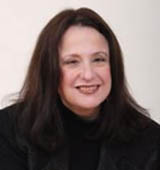The Danger Season
JH: Now that the election is over, and we know the worst about the economy (or least hopefully we do), we can get back to work and focus on day to day matters. And that means, as usual, our health. Time to stop making excuses about all the potato chips we’ve grabbed as we plop down in front of the TV to hear the latest polls, and about the new Ben & Jerry’s ice cream we’ve eaten every night for comfort as we try to deal with our checkbooks. And…
RM: Hey! Wait a minute – aren’t you forgetting something? What time of year is this? You know, the one you have a name for and always talk to your patients about?
JH: Oh, you’re right. It’s what I call the “Danger Season”: that period of time from Halloween until January 2.
RM: Why do you call it that? And how does this time of year impact on all those things we’re saying about getting back to work on health, eating better, walking?
JH: It’s absolutely the worst time of year for taking care of ourselves. The Holidays (which have become almost one long holiday), Thanksgiving, kids home from school, days off for shopping and gift buying, stopping for that double mocha latte and scone, candy canes at all the counters in stores, holiday parties, holiday cookies (love those Mexican wedding cookies smothered in powdered sugar), hot toddies, holiday dinners, weddings….
RM: Whoa! You’re really stressed out here!
JH: That’s why I call it the danger season: because of all the good cheer and easy food just sitting there for grabbing, it’s way too easy to rationalize forgetting all our healthy habits, and giving in to the easy life. Then in January, we are so out of shape and have gained so much weight, it is positively demoralizing. So, what do you suggest we do to avoid that?
RM: I do have tips, but too many to give all of them here. So, I will start by giving a few now, and adding to them in this blog as the weeks go by. Let’s start with:
- • Be aware that the upcoming 8 weeks can be dangerous to your health. Keep reminding yourself.
- • Be alert to your inner voice telling you “it’s ok to eat that holiday candy, just this once” and other destructive messages. Don’t listen to it!
- • Take action to avoid getting into difficult situations healthwise. For instance, give away or throw away the remains of that Halloween candy now, before you eat it all. Don’t leave bowls of goodies (candies and cookies) sitting out in your house because “it’s that time of year”; put them out only when company is coming. Look at your schedule closely: be realistic about all you have to do and the time it takes, and make a place for exercise.
- • Advocate for yourself. Don’t get that fattening holiday drink when you’re out with friends just because they insist that you do; stick with your regular skinny latte.
JH: Those are great. We’ll give more as these holiday weeks arrive.In the next blog, we’ll talk about some recent studies about docs prescribing placebos, more on exercise and breast cancer, and about an interesting study about which diets work the best.
comments off Robin Miller | Uncategorized |








